Rheas are tall, flightless birds in the Rheidae family. Within the family, researchers recognize two living species of these birds, the Greater Rhea, and the Lesser Rhea.
Both species hail from South America, where they live in different regions. Superficially, they appear similar to ostriches and emus, but they are only distantly related. Read on to learn about the Rhea.
Description of the Rhea
As their names might suggest, Greater Rheas are larger than their “Lesser” counterparts. The largest adult Greater stands about 5.5 ft. tall from its head to its toes. Conversely, the largest Lesser stands about 3.3 ft. tall. Their weight ranges from 30 lbs. to 80 lbs. or so.
Like their ostrich and emu cousins, these birds have long necks and long legs. Even though they cannot fly with them, they still have a wingspan approximately 8 ft. across.
Interesting Facts About the Rhea
Even though nearly everyone knows what an ostrich or an emu is, few people even know Rheas exist! Though they are less popular than their distant relatives, these birds are incredibly interesting creatures.
- Ratite – Scientists group these birds into an infra-class known as the “ratites.” Ratites are heavy birds that cannot fly. Most ratites have long legs, long necks, and quite heavy bodies. However, the kiwi is an exception to this rule. Even though they are ratites, kiwis are quite small and have short legs.
- Sailing – One of the benefits to having long legs is the ability to move very quickly. Rheas are fast runners, and use their strong legs to defend themselves as well. However, running without upper limbs is a little dicey when it comes to balance. Thankfully, they use their surprisingly large wings to balance and even steer while running.
- High Speeds – These birds are capable of reaching speeds up to 37 mph. While this isn’t that impressive when you compare them to a cheetah (70 mph), or a pronghorn (55 mph), it still dwarfs a human’s top speed! We have only clocked the world’s fastest human runner at 28 mph.
- Leisure Time – However, these birds aren’t just sprinting around at top speed all the time. They prefer a leisurely cruise while searching for food. While searching for food, these birds normally keep their heads about a foot and a half above the ground while the walk slowly.
Habitat of the Rhea
Because they rely on their strong legs to move them quickly, Rheas live primarily in open areas. This means that they don’t have to waste energy dodging trees and large shrubs when fleeing from predators.
Some of their favorite habitats are open grasslands, plains, steppes, savannas, and open woodlands with sparse tree cover. They also inhabit marshes and areas in close proximity to lakes, streams, and rivers. Some scientists have even spotted them swimming across bodies of water to get from place to place.
Distribution of the Rhea
The two different species of Rheas have different distributions. Their ranges do overlap slightly in some areas, including parts of Argentina and Chile. These birds live primarily in the flat regions to the east of the Andes Mountain range.
Greaters live farther north, from eastern Brazil through central Argentina. Lessers range primarily through southern Argentina, though one population lives on the western coast of the Andes Mountains in Chile.
Diet of the Rhea
These birds are primarily herbivorous, and the vast majority of their diet comes from plant matter. However, both species do sometimes feed on insects, invertebrates, and small animals on occasion. Researchers have seen Rheas eat snakes, small birds, fish, and other small creatures.
The bulk of their diet comes from fruits, leaves, roots, berries, seeds, grasses, and grains. To help digest their food, they swallow small stones and pebbles, which they store in their gizzard and use to grind up their food before digestion.
Rhea and Human Interaction
Humans hunt these wild birds for their meat, feathers, and skin, which people use to make leather. In addition to wild Rheas, people raise these birds on farms for this purpose as well. Outside of occasionally eating crops, these birds do not impact humans in a negative fashion.
Sadly, human interaction does put some of them in danger, particularly through habitat destruction. Though the Lessers have strong population numbers, their populations are in decline. The IUCN lists the Lessers as Least Concern. The IUCN lists the Greaters as Near Threatened, and notes that their populations are declining.
Domestication
Even though some people breed Rheas on farms, humans have not domesticated these birds in any way.
Does the Rhea Make a Good Pet
No, Rheas do not make good pets. They are wild animals, and humans have not bred them for a long enough period of time to ensure a docile and friendly animal. Some people keep them on farms, but you must fully understand how to care for these birds if you want to use them in agriculture.
Rhea Care
In zoos and on farms, these birds need lots of open space to run and exercise. Like emus and ostriches, if their enclosures are too small, they can run into the fencing when frightened and injure themselves. Especially with the Greaters, you need tall fencing to keep your birds contained and safe.
They need plenty of grass and low vegetation to feed on. You can also supplement their diet with commercial ratite food. Because they are social animals, Rheas must live in small flocks or mated pairs to meet their social needs.
Behavior of the Rhea
As you might have guessed by the fact they cannot fly, Rheas are terrestrial and spend their lives on the ground. They are diurnal, or active during the day. Their social structure varies based on the season. Outside of the breeding season they live in small flocks, and forage for food together.
As the breeding season arrives sexually mature females break off into smaller groups and solitary males court the female groups. Males fight one another and establish territories, all in an attempt to impress female flocks.
Reproduction of the Rhea
Rheas are polygamous, and breed with multiple partners. Males build nests, mate with females, and the females lay their eggs in his nest. After they breed, the female moves on to another male, and lays her eggs in his nest as well.
Males incubate and protect the eggs, and become so aggressive that the females must lay their eggs near the nest so he can roll them in himself! It takes about a month for the eggs to hatch, and the entire clutch hatches within approximately one day. The male cares for his chicks until they are about six months old, but the chicks stay with the flock for several years.

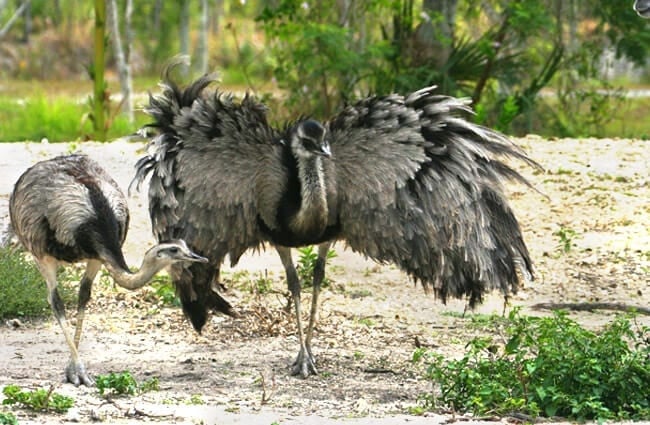
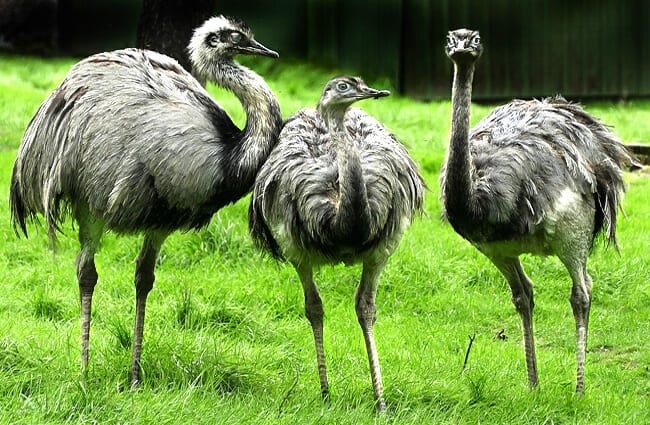
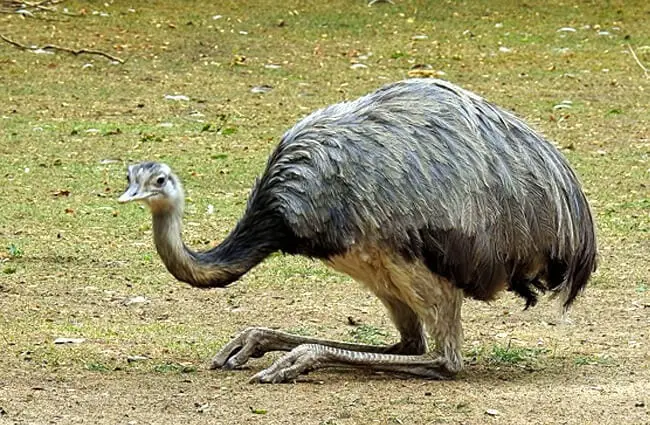

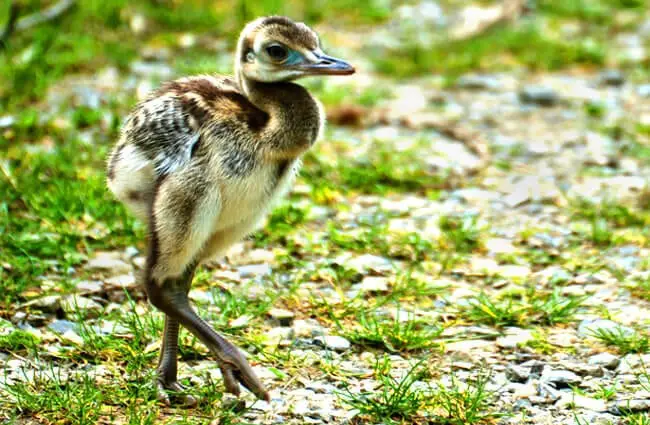
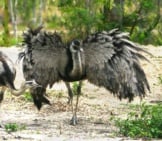
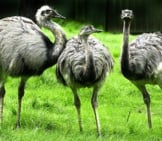
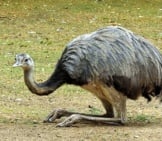


![Red Angus Closeup of a beautiful Red Angus cowPhoto by: U.S. Department of Agriculture [pubic domain]https://creativecommons.org/licenses/by/2.0/](https://animals.net/wp-content/uploads/2020/03/Red-Angus-4-238x178.jpg)












![Red Angus Closeup of a beautiful Red Angus cowPhoto by: U.S. Department of Agriculture [pubic domain]https://creativecommons.org/licenses/by/2.0/](https://animals.net/wp-content/uploads/2020/03/Red-Angus-4-100x75.jpg)

